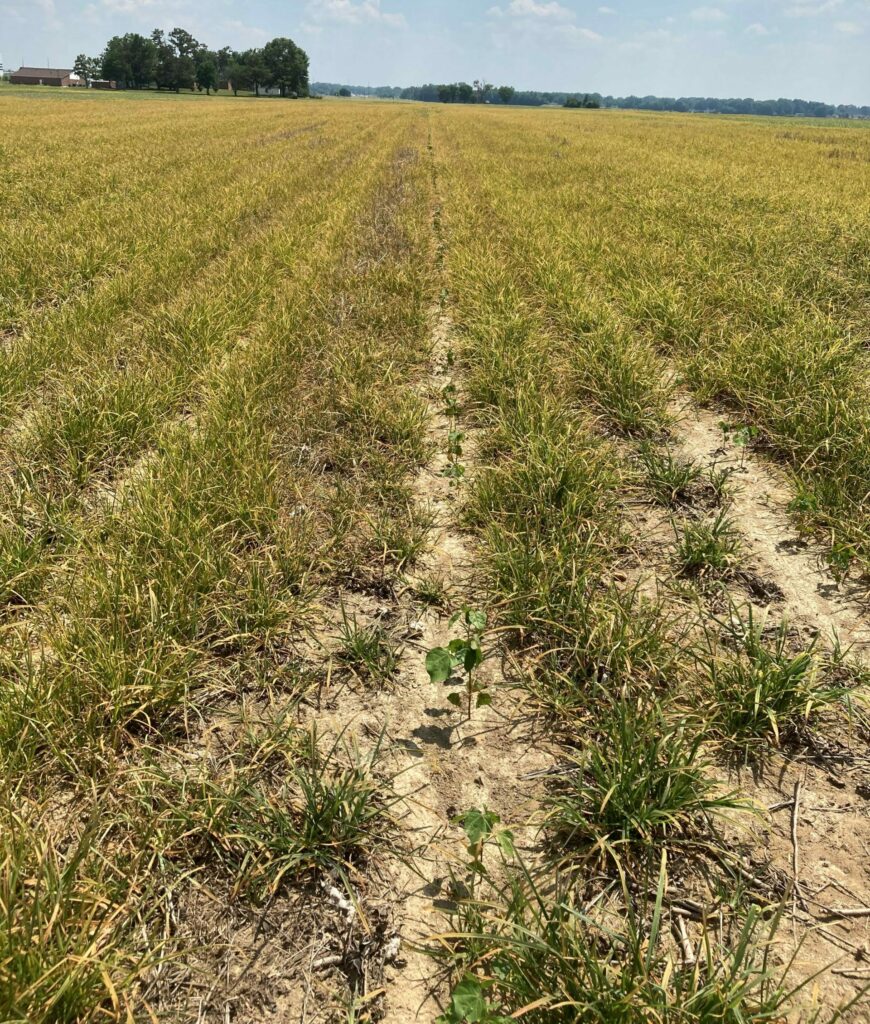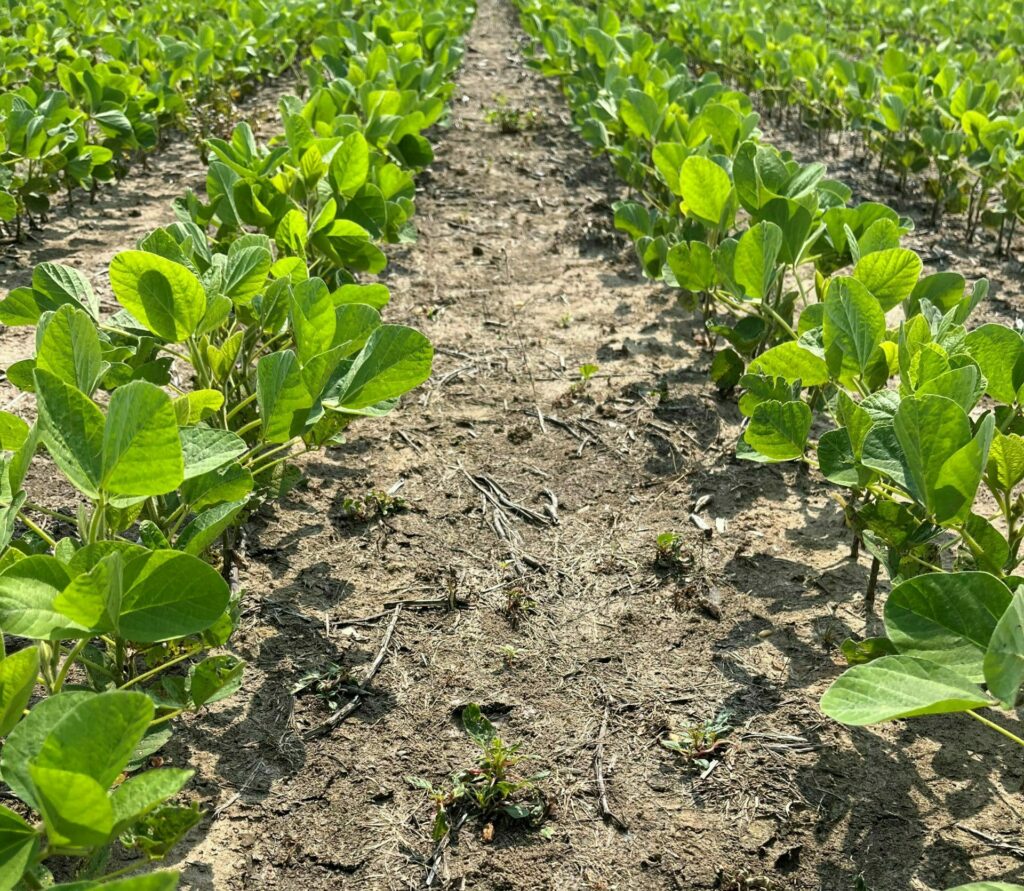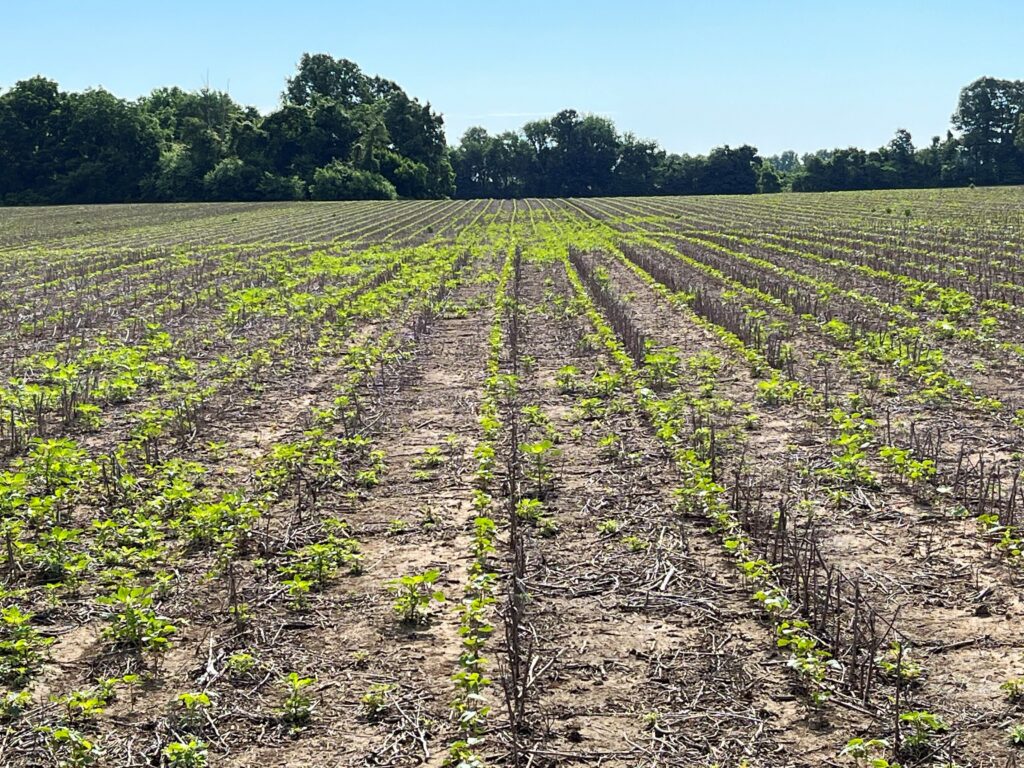
As the calendar turns to June weed management concerns change from ryegrass and horseweed to the summer annuals goosegrass, junglerice and Palmer amaranth.
Tennessee growers are in a real crunch time to control these three summer annual weeds. Big percentages of the corn, soybean and cotton crops all need some kind of POST application right now. The planter technology that can plant three different crops across large acreages very quickly has one drawback. The sprayers often cannot keep up to most every acre needing to be sprayed just as quickly.
In particular, goosegrass and junglerice that have escaped glyphosate burndowns will need to be addressed quickly. Reports would indicate some of these grasses are already 6” tall in some fields (Picture 1). Clethodim would be the best choice. For goosegrass or junglerice that has escaped burndowns and is now large apply at least a pint of a 2 lb clethodim and consider increasing the rate as the grass gets larger or is under stress.
From the Palmer amaranth perspective, in fields of Enlist crops, our research has clearly shown that a tankmix of Enlist One + Liberty can still be effective on Palmer amaranth that is resistant to dicamba and 2,4-D. However, size does matter. For the best chance of success, apply before pigweeds are taller than 4 to 6” in height.

We have walked some fields of early planted Xtend soybeans where dicamba applications to very small Palmer amaranth (<2”) was not effective (Picture 2). A Liberty application is needed now to try to take them out while there still is a chance.

In other fields the Palmer amaranth is already grown to the point where multiple applications of dicamba and/or Liberty will not be successful (Picture 3). A two-pass plan where dicamba is applied as soon as possible and then followed with Liberty 7 to 10 days later is the best approach to try to knock these pigweed back to where a hooded or post direct application might work. Then ideally, run a hooded application of paraquat or diuron + MSMA.

